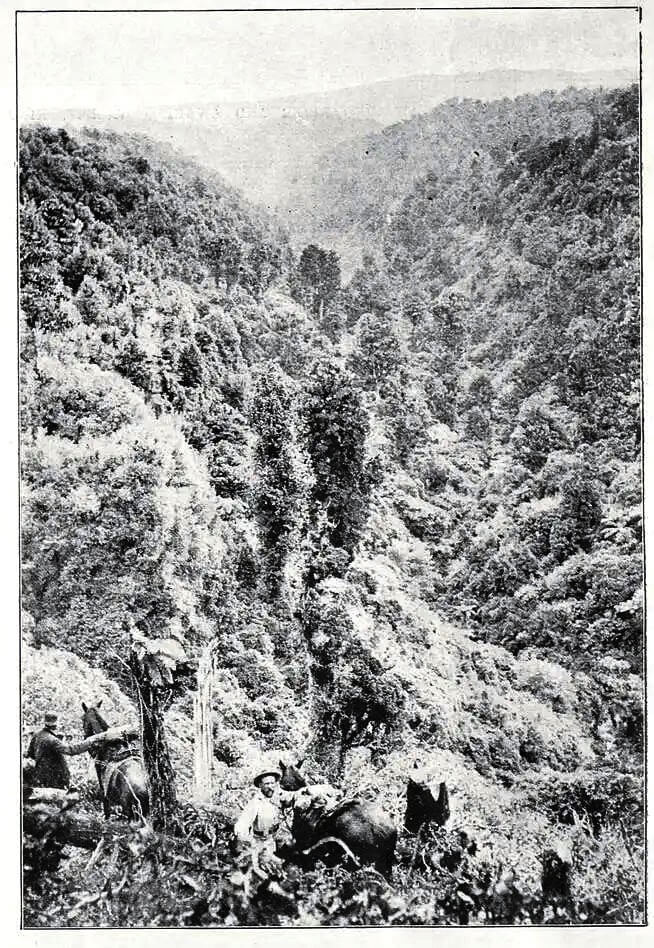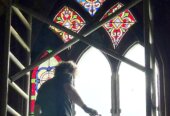Larrikins shooting pigeons in the Pirongia ranges were the cause of one of many fires that flared up there. These fires did a great deal of damage to the bush, scorching and killing trees at its edge.
The next fire cleared them off, and, year by year, the primeval forest was disappearing. It was feared the beautiful Pirongia ranges would be as bare as the bald hills above the township if these continual fires were not stopped. It was an absurdity that if a farmer found an old dead tree in the bush suitable for posts and split it up, someone amongst his neighbours informed the police and the government prosecuted him, but the bush could be burnt wholesale, and no one took any notice of it.
A ball held by the Kihikihi Lawn Tennis Club was a brilliant success. The hall was decorated with evergreens interspersed with the colours (pink and white) of the club, and tennis nets and rackets were tastefully placed in prominent positions. A large proportion of the invitations had been accepted, and the dance floor was comfortably filled. The music, refreshments and table decorations were of the very best and there appeared to be no ‘gooseberries’ – that unwanted third person when two people want to be alone. Chinese gooseberries however were abundant at Kihikihi. The annual shipping off to the Auckland market saw several tons sent by local growers who were rewarded with good prices. The crop, with the exception of a little frost damage, was very good.
It was many a long day since Te Awamutu looked as bright as it did on the opening of the Waikato West Industrial Exhibition. Bunting flew in all directions, and the township was crowded with visitors. The object of the exhibition was to provide pleasant employment for leisure hours, to develop the skill and inventive faculties of the young, and to foster a taste for the cultivation of plants.
The Prime Minister, Mr Seddon, had been unable to attend but sent a telegraph which said “exhibitions such as yours do a huge amount of good to the colony and act as an advertising medium. They further tend to promote the friendly feeling of rivalry between the different centres so essential to the development of our manufacturers and natural products.”
Among the exhibits some of the most notable were Māori curios – a carved waka, stone axes, and taiaha as well as an exceedingly choice collection of flax mats. Another article which attracted a lot of attention was a patchwork quilt made in 1817 – a most beautiful piece of needlework. Pictures and panels – one painted with toes – were also on display. Among the competitions were guessing games, one wanting to know how long a monster candle had been burning in Mr Ahier’s shop window (79 hours and 42 minutes). The nearest guess was that of Master Cecil Stitchbury, who guessed 80 hours. For a handsomely-dressed bridal doll no one was successful in guessing the name (Naomi) that had been bestowed upon it.

Pirongia mountain in distance








